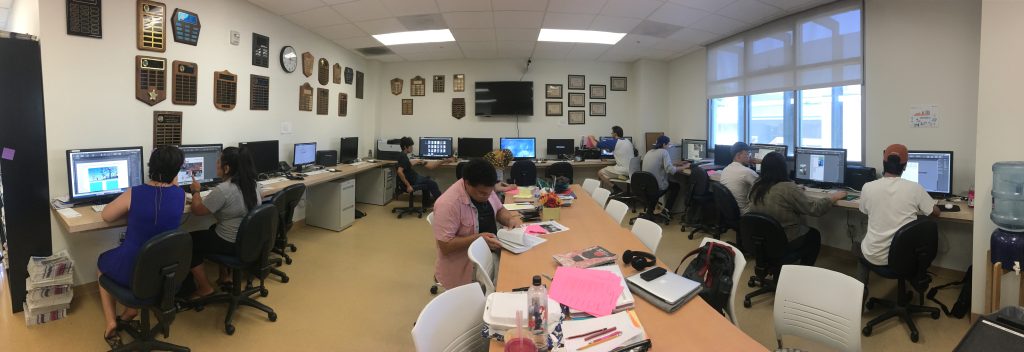The history of the student media at Citrus College runs deep. From yearbooks to the Citric Acid to the Collegian Owl to the Clarion to Logos Magazine, student media has been embedded throughout the college’s long and proud history.
However, restructuring of student media and media in general is a forced move. The media landscape is changing, and the changes in the profession should be reflected in the practices of student media.
With these changes in mind, the Clarion will move to a fully digital publishing structure in the fall of 2023, as ink-on-paper Clarion publishing will end.
The Clarion’s student media publishing history dates back 76 consecutive years in print, encompassing the bulk of the history of predecessors like the Citric Acid and the Collegian Owl. For many years, the Clarion in print provided readers with the information they needed to go about their world at Citrus College more informed.
However, news consumption habits are changing. Fully 86% of Americans get news on a digital device; only 32% of Americans get news from a print publication. These differences are even more pronounced for the 18-to-29 age range, the age of most Citrus College students. In that range, 71% of people get news online often, vs. only 3% who often get news in print. (Those over age 65 report 48% regular digital news consumption and 25% print consumption.)
Unsurprisingly, the Clarion’s shrinking print circulation and increasing digital consumption follows these preferences. The Clarion’s website, ccclarion.com, has averaged about 50,000 hits a year since 2017 when tracking began (minus a gap in 2021 when tracking was disabled due to technical glitches). This far outpaces the Clarion’s print circulation, which averaged about 800-900 pickups per issue pre-pandemic (or about 12,800 to 14,400 pickups annually), and which has averaged significantly fewer pickups per issue with reduced student population on campus since the COVID-19 pandemic in spring 2020.
Citrus is not alone. Many community college programs have made a similar shift, including both nearby Pasadena City College and Mt. San Antonio College, in recent years. While the pandemic has affected all aspects of publishing, both PCC and Mt. SAC have continued with strong student media presences online. Maybe the most important consideration for Citrus is that these schools’ transitions to digital publishing has not led to an uptick of students coming to Citrus who are interested in working with a student publication that has ink-on-paper products.
From a curriculum standpoint, this move also allows a re-imagining of courses such as COMM 230, Design for Media, and COMM 240A/B/C/D, the Clarion newsroom courses, to prioritize digital skills – the kinds of skills employers are looking for in college graduates.
Print is not “dead,” though. Specifically, with magazines, print readership is steady. The continued publication in print of Logos Magazine, which dates back to the late 1970s at Citrus, will continue offering students the option of producing a printed publication. Moreover, a once-a-semester publication in print will continue to help the campus and community visibility of student media.
Some efforts in transitioning the Clarion to fully digital publishing have already begun. The Clarion website underwent a complete redesign during the winter and officially launched prior to the start of the spring semester. Clarion staff began a weekly newsletter this semester, sending news to subscribers’ inboxes every Friday morning. Staff members also launched a new TikTok account to connect with students and the community on one of the largest social media platforms in the world. And students continued to work with the Clarion’s accounts on Facebook, Instagram and Twitter to share news of the college, community and world.
The Clarion and its predecessors thrived for 76 years in print. It’s my sincere hope, and expectation, that the Clarion will set itself up beautifully for the next 76 years with this evolution, and it will continue to be a vital part of Citrus College for decades to come.
–Patrick Schmiedt, Clarion adviser
